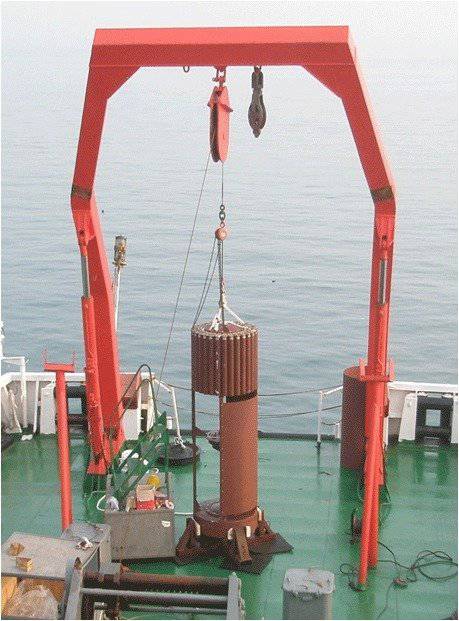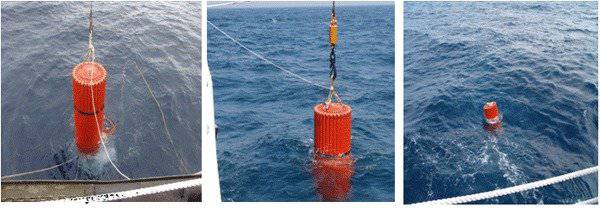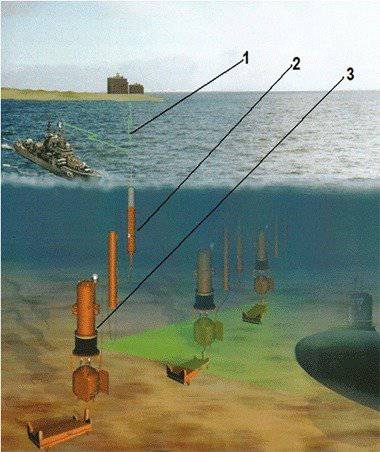Ukraine has developed a submarine anti-submarine system similar to the US SOSUS

The State Enterprise Kiev Research Institute of Hydraulic Instruments has developed an anti-submarine anti-submarine system for sea depths from 50 to 200 m. There is a similar SOSUS complex (SOund SUrveillance System, Sound Observation System), which ensures the safety of US territorial waters,

Unlike the American counterpart, the Ukrainian development has a more multifunctional purpose and smaller scale. Underwater alarm system for sea depths from 50 to 200 m.
The system consists of autonomous anchor passive radio hydroacoustic stations (ARGAS) and radio receiving coastal posts.
Information about the detected underwater moving object is transmitted to the coastal receiving post of the system using small VHF range beacons.
The range of the VHF radio beacon is limited to the line of sight of the radio receiving antenna and depends on the height of its location. For example, if the receiving antenna is located at an altitude of 200 m. Above sea level, the range of the exhaust beacon is up to 50 km.
The system can be installed in the form of extended barriers or single ARGAS at distances up to 50-70 km from coastal receiving posts.
Depth of installation ARGAS from the surface of the water - from 30 to 60 m.
Target detection range in passive mode - 10 km.
The distance between the ARGAS barrier is from 10 to 20 km. Depending on the conditions of propagation of signals.
The ARGAS battery life is up to 12 months and can be extended at the specific wishes of the customer.
Components:
1. Radio antenna and shore station equipment
2. Released radiohydroacoustic buoys VHF 3 range. Anchor passive radiohydroacoustic 4. Station (ARGAS)
The system is designed to detect submarines moving at different speeds (determines the bearing and range).
Information about the detected underwater moving object is transmitted to the coastal receiving post (1) using the VHF range small-sized exhaust beacons (2).

Information